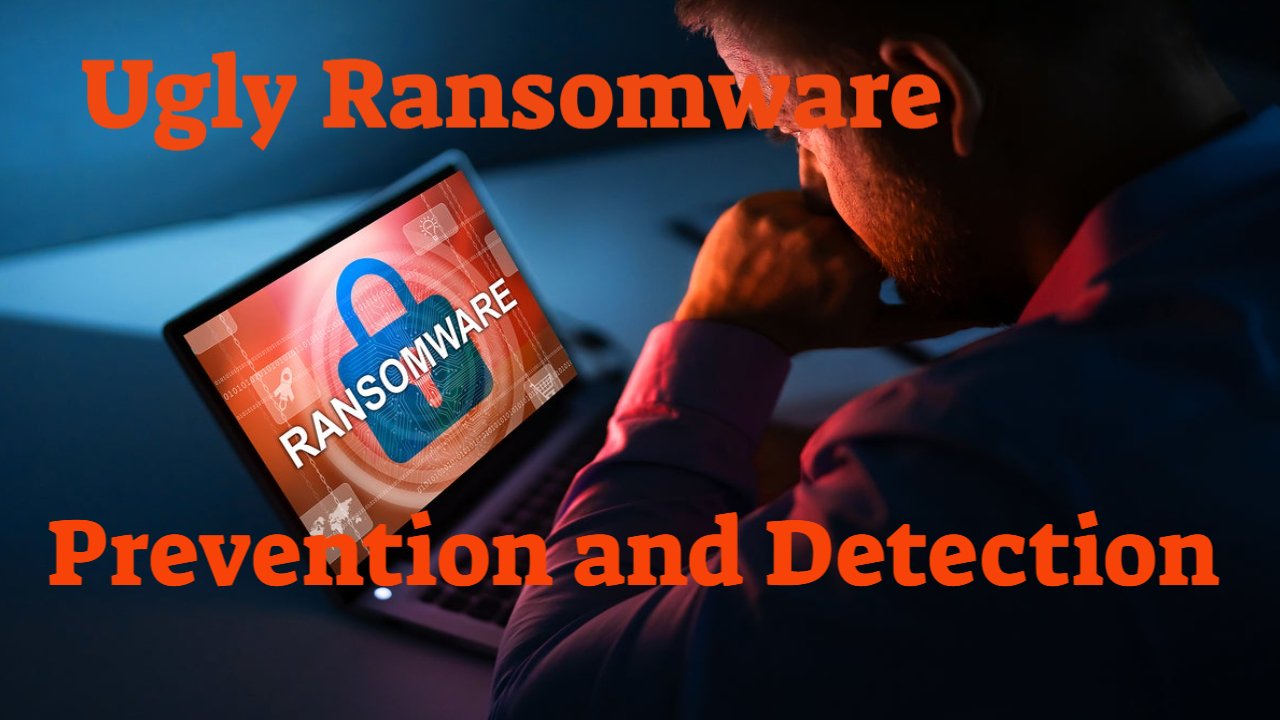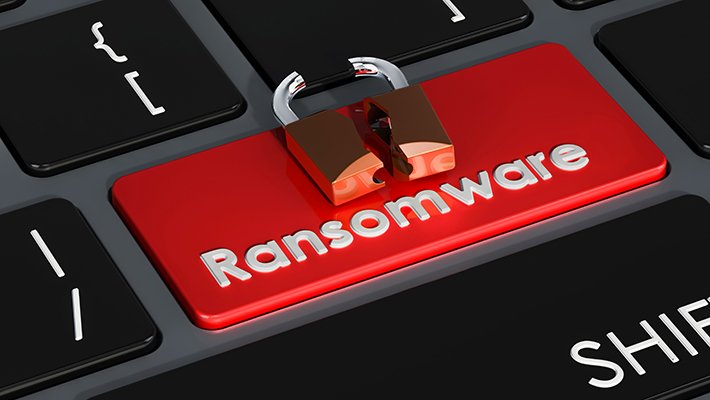Ugly Ransomware – Prevention and Detection
Ransomware Prevention – The Dos and Don’ts
When it comes to ransomware prevention, remember that prevention is far preferable to the cure. Vigilance and the correct security software are essential to do this. Vulnerability checks can also help discover intruders in your system.
To begin, you must guarantee that your system is not an ideal target for ransomware. To benefit from the most recent security fixes, device software should always be kept up to date. Even the best ransomware prevention techniques can fail, underscoring the significance of having a backup plan. In the case of ransomware, it is essential that you have a backup of your data.
If you back up your data to a device or location that your computer does not need to access, you can rapidly recover the data you need if an attack is successful. It is vital to back up any critical data regularly.
Malicious software that uses encryption to encrypt data and keep it for ransom has gained popularity in recent years. This ransomware is designed to extract money from victims by claiming to retrieve encrypted data. Like other computer viruses, it usually infects a device by exploiting a security hole in susceptible software or tricking someone into installing it. As it is more often called, ransomware targets high-profile targets such as hospitals, public schools, and law enforcement agencies.
Ransomware has now found its way into home computers.
The harmful ransomware business model has proven to be a lucrative industry for hackers. When it comes to ransomware prevention, here are a few dos and don’ts:
Email communication scanning is an essential aspect of ransomware protection.
Email scanning tools routinely detect malicious malware. When the scanner identifies ransomware, the email is deleted and never enters your inbox.
Ransomware in an email is often delivered as an attachment or as a file within the body of the email. Hackers have been known to introduce images that appear to be innocent, but when you click on them, ransomware is installed on your laptop. Scanning emails containing these sorts of attachments can help keep your device – and those on your network – safe from infection.
Connecting unknown USB sticks to your computer is never a good idea:
Connecting unfamiliar USB sticks or other storage media to your computer is never a good idea. Cybercriminals may have tainted the storage media and placed it in a public place to entice someone to utilize it.
Do not provide personal information when replying to an email, unwanted phone call, text message, or instant chat.
A cybercriminal may set up many traps to install ransomware on your computer, or to trick you into downloading it yourself using your personal information. People commonly use the same passwords for their laptops and websites that they use for their accounts and websites.
A cybercriminal will use your personal information to access an account, then use the password to gain access to your system and install ransomware. It is far more difficult for an attacker to carry out this sort of attack if sensitive information is not disclosed.
By imitating a trustworthy source, phishers will attempt to fool you into downloading malware or gathering intelligence for attacks.
For example, suppose you receive a message from your “finance institution” reporting “strange behavior on your account,” which sets off your internal alarm system. This is why this scam works so well because you are faced with hurry, stress, and uncertainty.
Hackers are also known to implant malware on a website and then use content or social engineering to entice visitors to click on it.
Social engineering applies pressure to the user, usually through fear, to urge them to perform a specific action—in this case, click on a harmful link. In many cases, the relationship itself appears to be innocuous.
Cybercriminals regularly create fake websites that seem real. You should avoid a site if you are unfamiliar with it or if it’s Uniform Resource Locator (URL) seems suspect, even if it appears to be a trustworthy site. Always double-check the URL before downloading anything from a website.
When traveling, especially if you will be using public Wi-Fi, utilize a dependable Virtual Private Network (VPN) when connecting to public Wi-Fi.
A VPN encrypts data transported to and from your device while it is connected to the internet. A VPN, in effect, provides a “tunnel” for your data to go through. To enter the tunnel, a user must have an encryption key. To access data delivered via the tunnel, a hacker must also decode it.
A VPN stops intruders from entering your connection and installing malware in your route or on your device for ransomware prevention.
Finally, use commercial-grade antivirus software and a firewall for ultimate ransomware prevention.
It is critical to maintaining your firewall and security software up to date. Because of the proliferation of counterfeit software, it is vital to use antivirus software from a reputable source.
Having business-grade antivirus software is usually recognized as one of the best ransomware prevention techniques. Security software scans data that enters your computer from the internet. When a potentially harmful file is identified, the application prevents it from being downloaded to your machine.
Commercial-grade protection software examines profiles of known threats and malicious file types to decide which are possibly hazardous to your PC. Security software often involves regular upgrades to stay current. They will be installed automatically by the provider. As new threats are discovered, their profiles are incorporated into the update.
As long as you maintain your program up to date, you will have the best ransomware prevention security the software has to offer.
Ransomware is one sort of cyber attack that, in most situations, may be avoided by taking the precautions outlined above.
However, it only takes one time for ransomware to infect your computer system if you let your security down. Following that, we’ll look at several steps you may take for ransomware detection.
Techniques for Early Ransomware Detection
Overall, the ransomware trend is unlikely to abate very soon. Its continued success and the development of extortion methods culminates in a sadly successful business model.
By focusing on observable characteristics that ransomware typically exhibits in the early execution stages, defenders can prevent the latter, considerably more catastrophic phases of these assaults.
While no security solution is perfect, a robust ransomware detection and response strategy can help shift the attackers’ balances.
A ransomware attack is carried out through a series of steps known as a death chain. Most ransomware attacks follow the following ransomware death chain: get access, boost privileges, target data, penetrate data, disable recovery capabilities, install ransomware, and receive payment.
Every phase in the ransomware kill chain provides the opportunity for ransomware detection to thwart a ransomware attack—but you don’t have to achieve 100% detection at each stage.
Instead, you can avoid ransomware attacks by recognizing one or more undesirable events in most kill chains before the attackers complete their aim.
Ransomware is a sophisticated malware that leverages a complex set of evasion methods, making it difficult to detect with standard antivirus software.
With ransomware bringing cyber extortion to a global scale, it has become vital to learn ransomware detection techniques before it impacts your system.
To take control of your computer system and encrypt all of your data, ransomware authors use military-grade encryption algorithms and cutting-edge social engineering tactics. Ransomware may even encrypt your data, making it hard to distinguish which files are infected and which are not.
Tip #1:
Attentively examining the email addresses of your received emails is a must-know safeguard for efficiently maximizing malware detection. The creators of ransomware use a similar-looking email address to transmit infected emails. They use innovative techniques to make bogus emails seem identical to the specific email address they are attempting to mimic.
Attackers, for example, may replace a tiny letter ‘L’ with an upper-case character ‘I.’ These letters are so similar that potential victims who don’t know how to recognize ransomware may be confused.
Tip #2:
Examining all email content is another approach for detecting ransomware before it causes damage to your laptop and data. Take your time going over the email’s content, mainly if it contains sensitive or confidential information.
Previously, it was simple to detect suspected ransomware-infected emails since ransomware authors simply sent out a considerable quantity of meaningless spam emails. Those days, however, are no longer with us.
Modern ransomware creators have improved their skills, making bogus emails look more convincing. To avoid ransomware detection, they will attempt to mimic the email address and writing voice of the person or business they are impersonating.
If you have any reservations about the substance of the email, do not act on it. As a result, calling the individual or organization directly to ensure its validity is the best thing you can do.
Tip #3
Anyone who understands ransomware detection correctly knows not to open links straight away, especially if you have doubts about the sender’s legitimacy or the content. Malicious links are the most prevalent way ransomware creators use to deceive users into unwittingly installing malware on their computers.
This warning goes beyond spam emails since every link you encounter on the internet can install malware on your machine. Look for misspellings and a unique domain name. Attackers can even make the domain appear to be similar to the original.
Remember, if the link makes you anxious, don’t click it until you’ve done some research on its credibility.
Tip #4
Being cautious while downloading file attachments is an effective way to detect ransomware before it infects you. Malicious file attachments are frequently concealed within encrypted zip files. This technique allows ransomware authors to hide the file’s content, and you won’t detect the destructive file encrypted inside the file until you extract it, at which time it will be too late.
Resist giving in to the virus creator’s demands in the case of a ransomware attack. Remember that paying the ransom does not guarantee that you will be handed the correct passkey. There are alternatives to coping with a ransomware attack.
Remember that ransomware authors target everyone, no matter where they are in the world. Whether it’s a personal system in your home or a large institution’s network system, the chance of being targeted by a damaging ransomware assault is unforeseeable and might occur at any time.
Your Ransomware Prevention Solution – It’s Never Been Easier
At home, ransomware is on the rise.
When ransomware infects your computer, it begins encrypting your data, leaving it unreadable or useless. The “owners” of the ransomware have a key that they promise will allow you to erase the encryption and regain access to your data – but only if you pay them hundreds (or even thousands) of dollars right now.
Furthermore, there is no guarantee that the victim will ever recover their files.
It is vital to secure your home computers from ransomware in the same way you protect your office PCs.
Here is the key takeaway:
Sophos Home Premium monitors program behavior on your home computer with the same sophisticated artificial intelligence seen in commercial ransomware protection solutions for major organizations facing active ransomware attacks. It checks whether your computer’s software is showing specific ransomware symptoms.
Sophos Home Premium can detect and stop ransomware that has never, ever, been seen before.
Sophos now offers ransomware prevention for home PCs with the same level of security as it does for over 300 million business devices worldwide.
Sophos Home defends against ransomware by leveraging the enormous, continuously updated SophosLabs library of threats, as well as real-time behavioral detection algorithms, to give the best ransomware protection available today.
Click this link to learn more: Sopho’s business-grade protection for ransomware prevention on home computers
For more information: https://websecurityhome.com/












